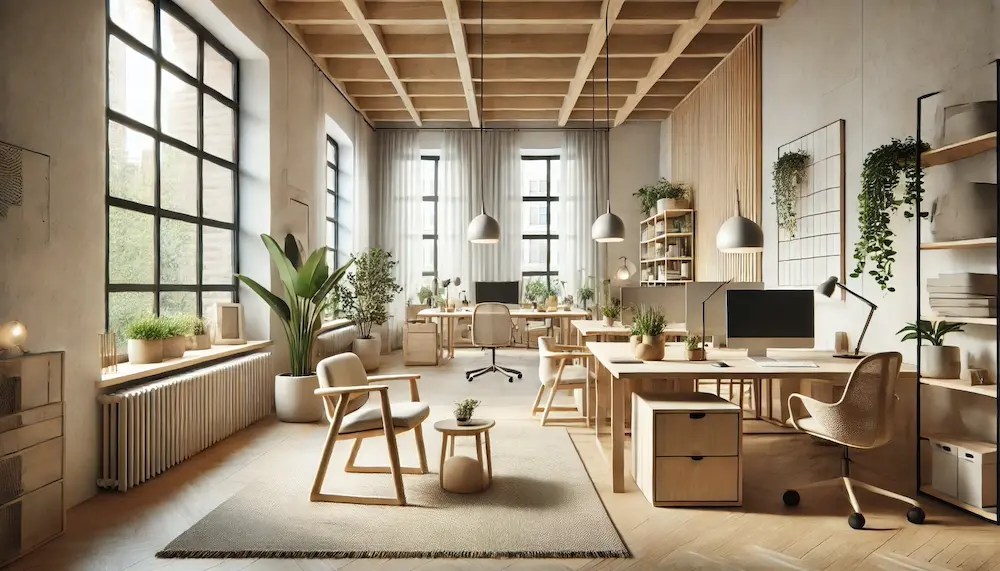Scandinavian design, renowned for its simplicity, functionality, and connection to nature, has become a popular choice for office interiors. This design philosophy creates workspaces that are not only aesthetically pleasing but also conducive to productivity and well-being.
History and Origins of Scandinavian Design in Offices
Emerging in the early 20th century, Scandinavian design originated from the Nordic countries—Denmark, Finland, Iceland, Norway, and Sweden. It gained international prominence in the 1950s, emphasizing minimalism, craftsmanship, and the use of natural materials to counteract the region’s long, dark winters by creating bright, cozy interiors. Incorporating this design ethos into office spaces has led to environments that are both functional and inviting.
Key Features of Scandinavian Office Design
- Minimalist Aesthetics: Clean lines and uncluttered spaces define the Scandinavian office, promoting focus and efficiency.
- Natural Materials: The use of wood, leather, and natural fibers adds warmth and texture to the workspace.
- Neutral Color Palettes: Predominantly white, gray, and beige tones are used, often accented with muted blues or greens to evoke calmness.
- Abundant Natural Light: Large windows and strategic layouts maximize daylight, enhancing mood and productivity.
- Functional Furniture: Ergonomic and versatile furniture pieces are chosen for their practicality and comfort.
- Incorporation of Greenery: Indoor plants are introduced to bring a touch of nature indoors, improving air quality and adding vibrancy.
Applications of Scandinavian Design in Office Spaces
- Home Offices: Implementing Scandinavian principles can transform a home workspace into an organized and serene environment.
- Corporate Offices: Businesses adopt this design to create welcoming and efficient work areas that reflect modernity and sustainability.
- Co-working Spaces: The adaptable and inclusive nature of Scandinavian design makes it ideal for shared work environments catering to diverse professionals.
Considerations When Designing a Scandinavian Office
- Space Optimization: Ensure that the layout promotes openness and avoids clutter, even in smaller areas.
- Quality Furniture: Invest in durable, well-crafted pieces that offer both comfort and style.
- Personal Touches: Incorporate elements like artwork or textiles that reflect individuality while maintaining the overall minimalist aesthetic.
- Sustainability: Choose eco-friendly materials and energy-efficient lighting to align with the environmental values inherent in Scandinavian design.
Conclusion
Scandinavian office design offers a harmonious blend of functionality and beauty, creating workspaces that inspire productivity and well-being. By embracing its key features and thoughtfully considering space and material choices, one can craft an office environment that is both timeless and efficient.
